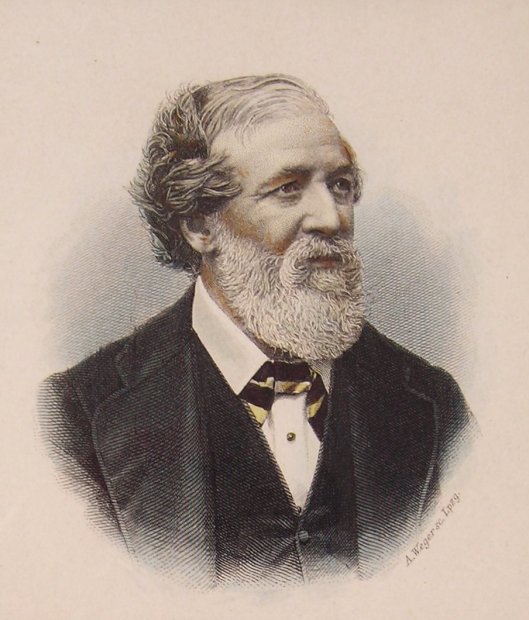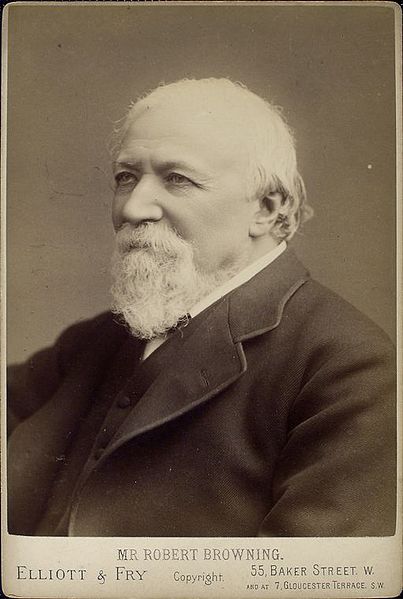"An artist is never ahead of his time but
most people are far behind theirs."
AUTHOR: Edgard Varese
MEANING OF THE QUOTE:
"Sometimes artists create art which is
not understood by the general public."
ROBERT BROWNING
OVERTURE (1/3)
Kenneth Schermerhorn, Conductor
Nashville Symphony
ROBERT BROWNING
OVERTURE (2/3)
Kenneth Schermerhorn, Conductor
Nashville Symphony
ROBERT BROWNING
OVERTURE (3/3)
Kenneth Schermerhorn, Conductor
Nashville Symphony
The Robert Browning Overture is the
the only entry in the series of tone
poems that Ives substantially
completed on a projected project he
called "Men of Literature" (though
some of the sketches for the others
ended up, among other places, in
the Concord Sonata) written by Ives
after his wife, Harmony, gave him
a copy of Browning's epic poem

for his birthday in 1908.
Ives took Browning's Faustian
treatment of the alchemist, overbearing
Romantic ambition redeemed by love, as
his subject which he also later wrote into
a separate song using material from the Overture.
There are a few clues to some of Ives's extra-
musical thinking in connection with the Robert
musical thinking in connection with the Robert
Browning Overture. One clue lies in the fact
that its chief motive, a fanfare-like figure
sounded by a muted trumpet about halfway
through the slow introduction, was also used
by Ives together with other material from the
succeeding allegro in the brief but equally
monumental song, "Paracelsus," to Browning's
text. The words associated with the motive
in question as it appears in the song are:
"I gazed on power,
I gazed on power till I grew blind."
The music has bold, complex violent contrasts,
and is often polytonal, polyrhythmic, poly-multi-
everything music filled with dense, abstract
polyphony, programmatically inspired as a
musical reflection of Paracelsus' alchemistry
formularies.
The Overture opens with a slow, haunted
introduction, woodwinds gradually supplanting
hushed strings. Then a furious Allegro march
explodes with all of Ives' poly-tricks, a shrieking,
surging thing that seems ever pressing forward
and upward. This is then supplanted by an
Adagio set of variations, beginning with a string
chorale of Mahlerian richness. The March is
repeated, leading now into an intense fugal finale.
Writings Of Ives copied from the
original manuscript said that
"Browning was too big a man to rest in one nice
little key, his inward toughness and strength, he
walked on the mountains not down a nice proper
little aisle. . . His mind had many roads, not always
easy to follow—the ever-flowing changing, growing
ways of mind and imagination—over the greet
unchanging truths of life and death."
When the final, shattering, quadruple forte
chord is released, there remains just a hint
of the Adagio, like a great unchanging truth.
"TRUTH is within ourselves; it takes no rise
From outward things, whate’er you may believe.
There is an inmost center in us all,
Where truth abides in fullness."
-from the poem, ‘Paracelsus’ By Robert Browning
 |
| Poet Robert Browning, 1812–1889 |
LINKS
GRANADA ADV. STRINGS
1. SHIFTING THE SCALE ON EACH STRING
a. Fingering 12..12..12.. UP and DOWN with guide notes
2. NUMB
3. LAS MANANITAS II
INTRO. TO INSTRUMENTS
GRANADA
1. RECORDERS
a. Review musical alphabet on the recorder
b. Review step-wise motion note reading
c. NAME THAT TUNE
1) Using note reading students play unidentified songs on the recorder
HILLVIEW
1. RECORDERS
a. Review musical alphabet on the recorder
b. Review step-wise motion note reading
c. STARBURST (2-NOTE NOTE READING SONG)
d. SONG OF THE SEA (3-NOTE NOTE READING SONG)
1) Started the song first by ear training high/middle/low sounds
1. RECORDERS
a. Review musical alphabet on the recorder
b. Review step-wise motion note reading
c. NAME THAT TUNE
1) Using note reading students play unidentified songs on the recorder
HILLVIEW
1. RECORDERS
a. Review musical alphabet on the recorder
b. Review step-wise motion note reading
c. STARBURST (2-NOTE NOTE READING SONG)
d. SONG OF THE SEA (3-NOTE NOTE READING SONG)
1) Started the song first by ear training high/middle/low sounds
GRANADA BEG. STRINGS
1. SCALES: G, D, A Major
a. Slowly/Quickly Rhythms
b. Slur 2 WB
a. Slowly/Quickly Rhythms
b. Slur 2 WB
2. CIDER HOUSE RULES
HILLVIEW ORCHESTRA
1. VIVA LA VIDA
a. Sight Reading
1. VIVA LA VIDA
a. Sight Reading





